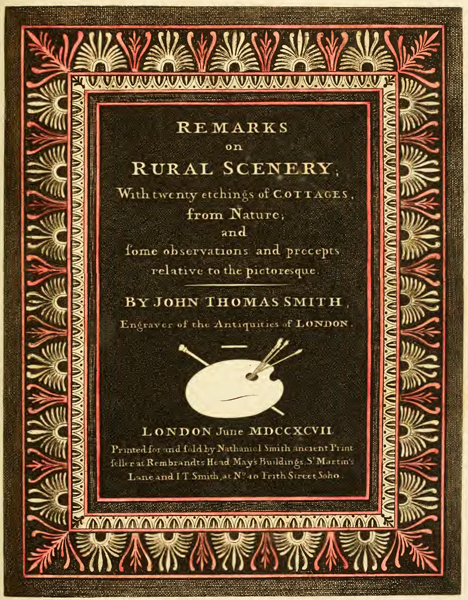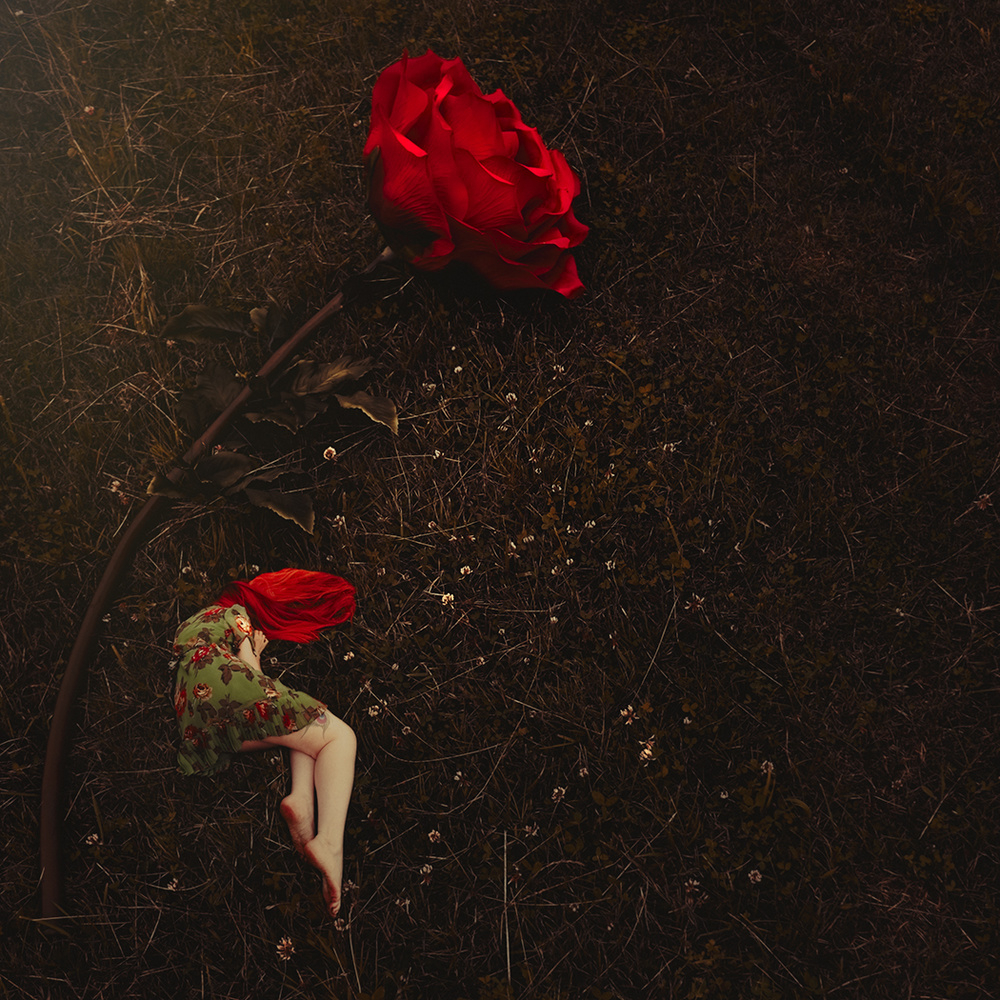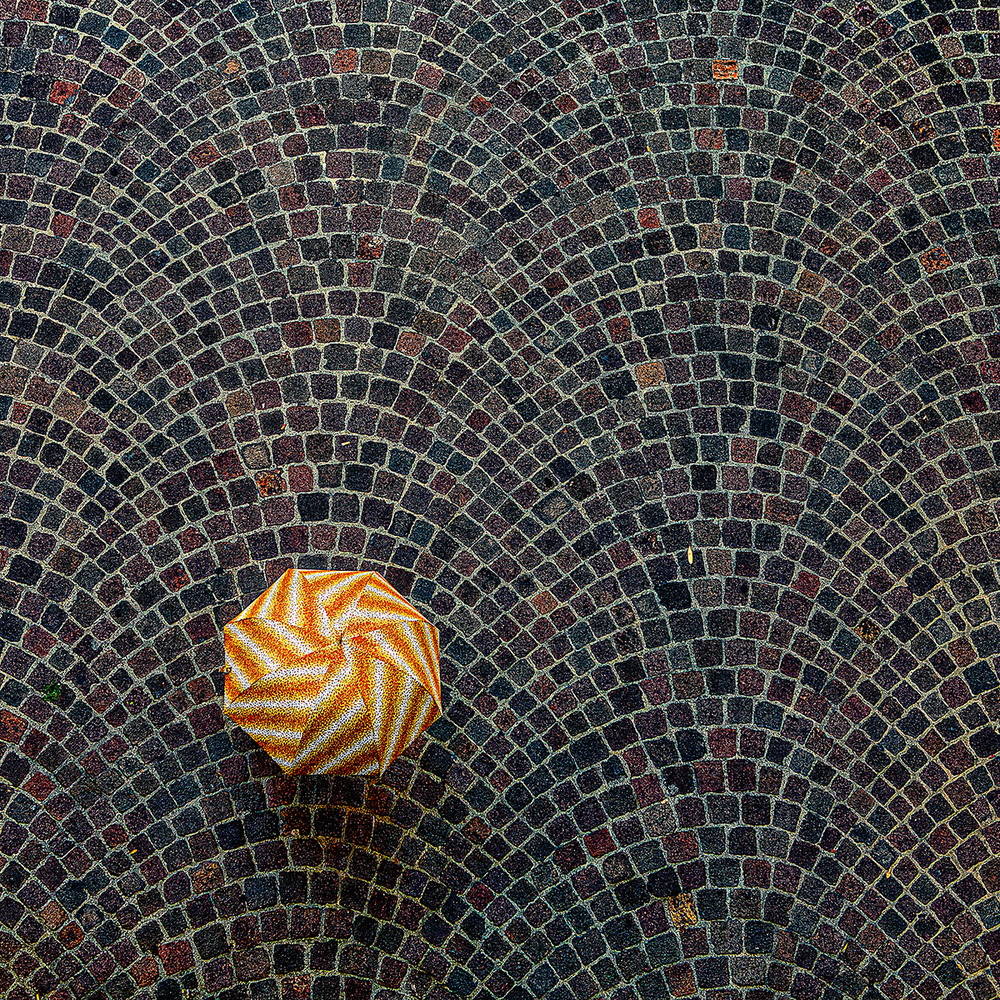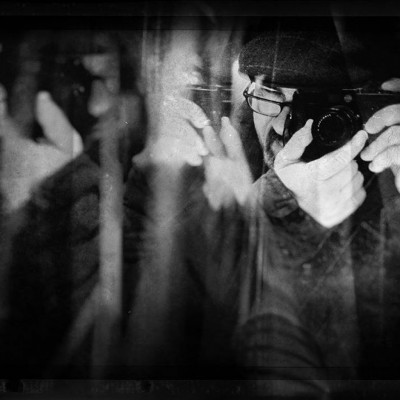SEARCH






|
|
|
|


by Editor Wicher Bos
Published the 16th of April 2020
I don’t think that there is one photographer in the world that never heard of the Rule of Thirds. There is hardly a photography course or book without it.

'Rule of Thirds' by Aryan Hewrami
The questions I asked myself: Where did it come from? Who started this?
Of course, in answering them, you end up reading lots of old books and magazines. The ancestral tree of this Rule is something I like to share with you.
In the 16th and 17th century you will not read about Rules of Thirds, one of the famous books The Art of Painting (1661) was written in verses by Charles-Alphonse Du Fresnoy. It deals with various topics but composition is mainly aimed at symmetry.
Du Fresnoy:
“To follow and to fix each flying grace:
But earth-born graces sparingly impart
The symmetry supreme of perfect art;” (line 69)
Later he mentions the Golden Mean (golden section):
Genius again correct with Science sage.
And curb luxuriant Fancy's headlong rage.
“Right ever reigns its stated bounds between,
And Taste, like Morals, loves the golden mean." (line 99)
Early 18th century books by Roger de Piles (1708) and Jonathan Richardson (1725) very much focus on creation of Beauty by Harmony and Unity, but there no mention of any Rules of Thirds.
Richardson:
“Composition, this is putting together for the Advantage of the Whole, what shall be judged Proper to be the several Parts of a Picture; either as being Essential to it, or because they are thought necessary for the common Benefit…”
Over time, we can recognize a more systematic the approach of composition in books. In 1753, William Hogarth publishes The Analysis of Beauty. It has a clear subject structure and works with examples:
In chapter 6: “…in my mind, odd numbers have the advantage over the even ones, as variety is more pleasing than uniformity, where the same end is answered by both; ...”
The first man to mention a “Rule of thirds” is John Thomas Smith (1766–1833) in 1797 when he publishes his book “Remarks on Rural Scenery.”

Smith writes: “Analogous to this "Rule of thirds", (if I may be allowed so to call it) I have presumed to think that, in connecting or in breaking the various lines of a picture, it would likewise be a good rule to do it, in general, by a similar scheme of proportion; …”
And continues:
“This rule would likewise apply in breaking a length of wall, or any other too great continuation of line …, I have found the ratio of about two thirds to one third, or of one to two, a much better and more harmonizing proportion, than the precise formal half, the too-far-extending four-fifths — and, in short, than any other proportion whatever.”
Smith seems to refer to a work by Sir Joshua Reynolds, in which Reynolds discusses, the balance of dark and light in a painting – the fun bit is that the book Smith quotes does not mention ‘thirds’ at all. Reynolds also did not discuss the idea that intersections of the third-lines of the frame are strong or interesting for composition.
For that had to wait a few years more; Frank Howard (ca.1805–1866) detailed the ideas of Hogarth, in a book titled The Sketcher's Manual, 1837. Howard discusses composition in a structured way and defines rules he derived from the works of master painters. In this book Howard mentions ‘strong and weak points’ in a grid made by 3, 5 or 7 lines – However, he doesn’t explain why…
Our next stop is Alexander Keighley (1861–1947), a pioneer in the pictorial movement in photography.
He gave a Lecture before the Leeds Photographic Society on April 25th, 1899:
“Art Principles Applied to Photography.
In every picture there are also strong parts and corresponding weak parts. The weakest part is, of course, the centre of the picture, ... because it divides the picture into two and cuts it up into equal parts, and does not give the element of variety.
A good way is to divide the picture into three parts, horizontal and vertical.…
This rule should not be adhered to in any mechanical way; circumstances alter cases, and it is very useful to have such a rule in one's mind, and to borrow from it only in combination with knowledge and discretion.”
Keighley probably calls it a rule to emphasize it. A grid of 3 makes the jump to a ‘Rule of Thirds’ easy. Lectures and Photographic clubs, were instrumental in spreading this ‘norm’ further.
Arthur Hammond (1880 - 1962) advocated a similar approach in his book “Pictorial composition in photography” (1920) and years later in a magazine:
“Without going very deeply into this question of pictorial balance, it may be said that, as a general rule, if we divide our picture space into thirds both vertically and horizontally by ruling lines across it, any of the four places where the lines cross would be a good location for the principal object of interest.”
(Arthur Hammond, 'Art in Photography' American Photography, May 1948)oelz
Photography became an increasingly popular activity and a family matter.
There was a strong need for ‘simple rules’ to guide the ‘masses’ in their ambition to take decent pictures. This is where that simple rules with old roots, in the three by three grid won its popularity.
Also, Kodak representatives gave lectures how to take ‘good’ photographs, it included (1979): “good composition; use of the rule of thirds for optimal placement of one primary subject, (the rule of thirds was diagrammed for the audience)”.
The Rule of Thirds had lost its origin and became synonymous with good composition.
Today it is all around us. The rule is a rough simplification of proportional schemes like "the golden section" — a system of proportion handed down with various refinements from Pythagoras.
There you have it, a genealogy of the famous and sometimes adored composition rule.

'The Berlin way' by Marc Apers

'Voyage to the light' by Ben Goossens

'Windows on the City' by Mathilde Guillemot

'Walking the line' by Huib Limberg

'Third Rock From The Sun' by George Digalakis

'Rule of thirds' by Carlos M. Almagro

'Footprint3' by Mohammadreza Momeni

'Shelter......' by Button Moon

'Yellow window' by Gilbert Claes

'Yellow square' by Luc Vangindertael

'A red umbrella' by Inge Schuster

'The yellow umbrella' by Massimo Della Latta

'The guardian' by Ben Goossens

'tree of life' by Anja Buehrer

'inner conflicts – the inner self' by Anja Buehrer

'New world creation' by Adrian Popan
Wicher
Please let me know what you feel about history articles like this one. If you like it I can do a few more occasionally, if not… this was the last one.
 | Write |
 | Francesco Del Santo Wicher, I find your article very interesting, and a review of the Rule of Thirds can never hurt. Welcomed more history articles. And well chosen photos that accompany the text.
Thank you! Best regards, Stay safe and well. |
 | Wicher Bos CREW Thank you for the encouragement! |
 | Francesco Del Santo You are welcome, Wicherbos! |
 | Steven T CREW Wicher, thank you very much for the article, and - Yes! - please write more history articles. We all know the rule and use it - but learning where it originated and how it wormed its way into our compositions is really interesting. |
 | Wicher Bos CREW Ok thanks for the support! :) |
 | Peter Davidson CREW Well done Wicherbos, interesting read, do carry on! |
 | Wicher Bos CREW Thanks Peter! |
 | Adrian Popan PRO Many thanks for this very useful article. By all means, please continue.
Warm regards, Adrian |
 | Wicher Bos CREW Thank you! |
 | Wicher Bos CREW Perhaps one small addition that I found, to clarify the role Kodak had by issuing books:
In 1905 Eastman Kodak published an annually revised book entitled THE MODERN WAY IN PICTURE MAKING. In it, amateur rules-of-thumb about exposure, composition, and pleasing subject matter were promoted:
“The word “composition” as applied to photography may be summed up in two words, selection and arrangement. … There are a few rules that can in most cases be followed with good results. The horizon line, which in most landscapes is the more conspicuous, should never divide the picture into two equal parts, but should be either one-third from the top or one-third from the bottom. …”
|
 | Gilbert Claes PRO Congratulations ... Very interesting article and worth repeating. The provenance and overview of developments in the history of this subject is very instructive. Thank you for your research and publication ... Best regards. |
 | Wicher Bos CREW Thank you Gilbert! |
 | Mathilde Guillemot PRO |
 | Wicher Bos CREW thx |
 | Mathilde Guillemot PRO |
 | Wicher Bos CREW merci Mathilde! :) |
 | Massimo Della Latta Complimenti |
 | Wicher Bos CREW Thank you! |
 | Vladimir Asriyan Your article dear Wicher Bos is already remarkable in that it gives us the opportunity to talk and exchange opinions on such an important topic as the composition of the picture and its rules. I must assume that of course no one takes the ruler and does not divide the frame into 3 vertical and horizontal lines. But instinctively, the construction takes place according to these rules. I want to supplement your wonderful article with a link to 21 beautiful pictures confirming the location of the object in vertical lines.
https://cameralabs.org/8682-pravilo-tretej-21-fotografiya-s-otlichnoj-kompozitsiej
With regard to dividing the image along horizontal lines, in particular about the location of the horizon, here it seems to me that frequent violations of this rule are possible. Here is a link illustrating my statement.
https://www.takefoto.ru/articles/teoriya_fotografii/1332_gde_raspolojit_liniyu_gorizonta_na_fotografii
To summarize. At this point, a free-spirited and creative artist is likely to feel somewhat constrained by the apparent rigidity of this rule. However, all the rules exist in order to break them sooner or later - and this particular one is no exception. It is time to release our inner protest. A rule is useful where it benefits.
The central principle of the rule of thirds is that it is not ideal to place the subject in the center of the picture. But what if you want to express the symmetry of an object? This is exactly what the example on the left does.
Similarly, there are many other situations in which it is better to ignore the rule of thirds than to apply it. For example, you might want to make the subject look more opposing. Or, say, upset the balance.
It is important to ask yourself: what is special about the subject, what do I want to highlight in it? What mood do I want to convey? If the rule of thirds helps you achieve your goals, use it. If not, do not let him interfere with your composition.
Dear Vicher Bos, I urge you to continue the series of your wonderful articles. This is very useful and necessary for all photographers, regardless of their level of professional training.
Dear Yvette! There is no such interesting magazine with such remarkable authors and articles on any site. Thank you so much for your work. You are a wonderful organizer and editor. !!! |
 | Wicher Bos CREW Thank you Vladimir! Also for the beautiful images dat are presented on the sites where your links bring us. It was a pleasure looking at them. Thanks to Google i could even read the Russian ;) Fully agree with your view; any rules or principle should serve the artist's purpose and goals, not the other way around. |